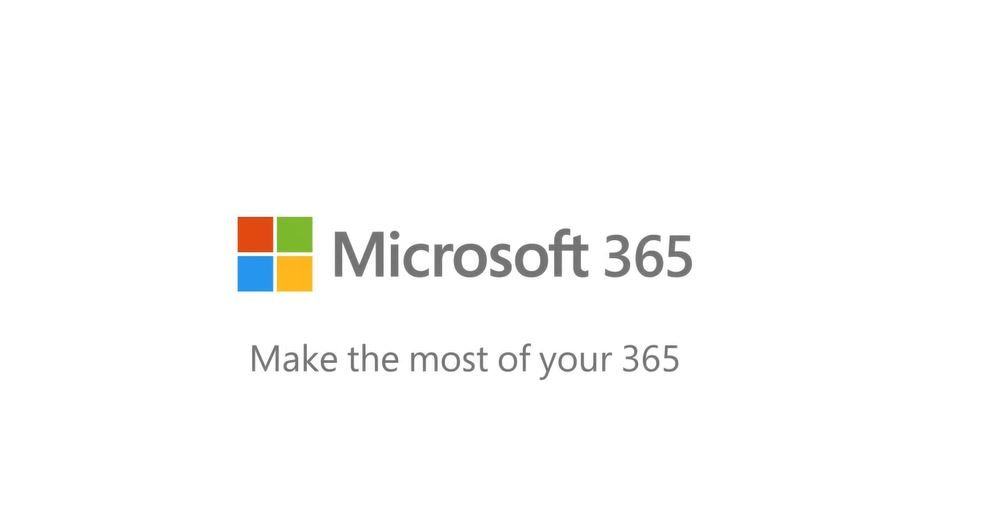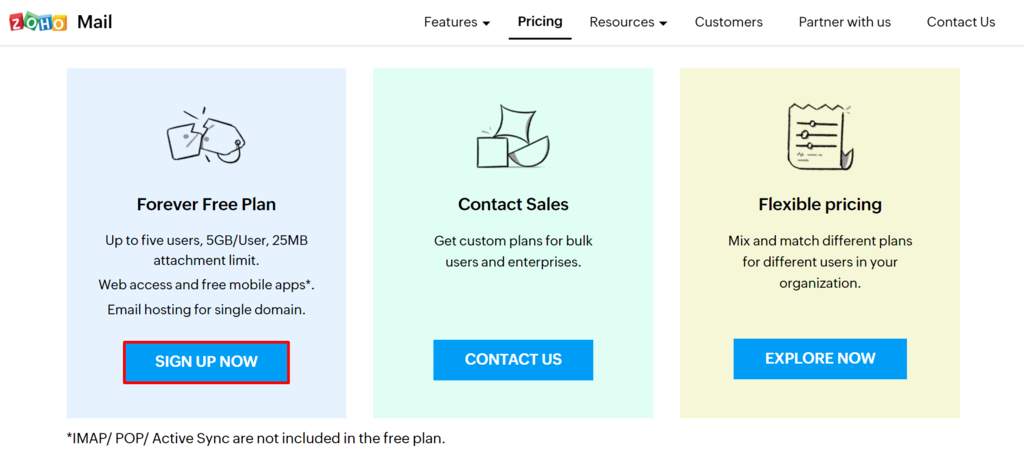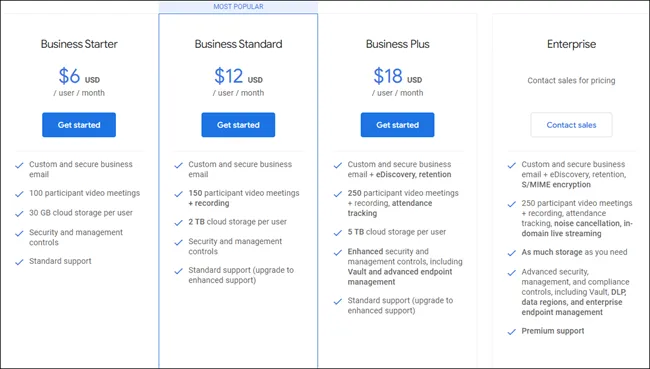Since the days of old, most consumers have relied on email as a main form of communication. Emails have been around longer than any other form of social media and still serve as a critical platform for businesses to communicate with customers, both online and offline. Emails have also become a popular way for companies to handle customer feedback. And the very backbone of outbound email campaigns.
For outbound sales, email is the undisputed champion. For one, it does rank up cost like most other sales channels. However, there are restrictions on how many emails an individual may send in a set period of time.
In this blog post, we will discuss the sending limits of major email service providers like Google workspace, Zoho, etc. We will also go through how to send unlimited emails despite your ESP imposed limits.
What are Email Sending Limits?
No matter what industry you are in, sending a large number of emails can be considered spamming by your prospective customers. For this reason, it is important to be aware of the email sending limits for your particular service provider. In general, most providers would limit the number of emails that you could send each hour or day.
Some email service providers impose limits on the number of emails that can be sent within a day. These limits are primarily meant to prevent their services from being used for spamming but also as a way to conserve bandwidth for other users and provide more effective customer service. Gmail, for example, allows up to 500 emails per day, while Yahoo! Mail only allows 100 emails. It is important to stay within these limitations when sending emails because service providers will often impose restrictions, such as locking or suspending your account, if you exceed the limit.
Email sending limits are becoming more of a concern, as it is becoming increasingly difficult for email senders to stay within the guidelines. As email use becomes ever-increasingly popular, so does email spamming.
Why do email servers have limits?
Email servers have limits to help control spam. If the limits are exceeded, the server will block the user's access to send emails. It is important to understand the interval of the limits even though they stated 'per day. Google, for instance, calculates your sending limits on a 24-hour interval. Zoho, on the other hand, does so on a calendar day using your account timezone (12 AM to 11:59 PM).
An email server has limits for two reasons. The first is that email servers are usually set up so that they only allow a specified number of connections per day. This helps control spam by preventing spammers from sending out thousands of messages in one day. The second is that the server might restrict the number of messages sent or received per hour, day or week, depending on how much resources it has available for this purpose.
We generally see an increase in sending limits as you upgrade the plan. This is true for Zoho, Google Workspace, and most other providers.
Zoho email sending limit:
For Zoho, it is a little tricky. Zoho insists that you aren't allowed to send emails in the following categories:
- Promotional emails
- Mass emails
- Marketing emails
- Newsletters
- Automated Emails
- Transactional Emails
Be careful with this one, they don't allow Zoho mail to be used for cold email. The penalty is account suspension.
We, however, have seen a good number of our users able to use Zoho mail for cold email without issues.

Sending limit: 500/day for paid accounts. This might start at 50 per day until you request an increase. For free accounts, the limit is set at 50/day.
Be sure to check. Zoho also has a 2,500 per day plan which you can get by contacting support. We couldn't confirm this though.
If the email sending limit is exceeded on Zoho, sending will be paused, all sending attempts will bounce instead, until the next calendar day - using your account's default timezone for calculation. For Zoho, a day is calculated using the default timezone on your Zoho account. Unused limits don't roll over into the next day.
See Zoho mail website here
Google Email send limit:
Unlike Zoho, it seems much more straightforward with Google. Plus, you aren't actively told not to send sales emails. You simply have a limit to stick to, nothing more.
Once this limit is exceeded, you can't send any more for 24 hours. But you can still be able to use other features in your mailbox, including receiving new emails. Access to other Google products will not be affected too.

Sending limits: 500/day if using Gmail.com domain or if on the free trial of the workspace. Otherwise, it is 2000/day for paid Google workspace account.
It is important to note that an email is counted as sent for each recipient. As such if you add 20 recipients while composing an email on the Google mail client that counts as 20 emails sent.
Like Zoho, unused Google workspace sending limits don't roll over into the next day.
If you exceed the allowed sending limits, sending will be suspended until after 24 hours. Unlike Zoho, however, Google uses a 24-hour interval, not calendar time in imposing sending limits.
Microsoft (office) 365:
The Microsoft website shows the limit for email per minute is 30 emails. It gets even better; you can send up to 10,000 emails per day. This limit seems to be consistent across all plans.

The generous limit places Microsoft at the very top of email service providers we have reviewed so far in terms of volume allowed per day.
How to increase your limits:
- Add multiple user mailboxes.
- Use SMTP providers tailored for volume sending.
- Rotate your sender when sending campaigns.
Use multiple user mailboxes to increase limits:
Nearly all sending limitation is placed on per mailbox level. This means that if you have multiple mailboxes from the same providers you can increase your limits with each addition.
For instance, say you have dan@example.com, you can by adding daniel@example.com increase your sending capacity.
The downside, however, is that it does provide another level of complexity and extra mailboxes to be managed. Before you write off the management complexity, consider most ESP will charge for every added user inbox.

For providers like Zoho, you select a plan and get access to a certain number of mailboxes (users) that can be added. To utilize all available slots on your active billing plan, adding additional user mailboxes is a good idea in this case.
On the other hand, providers like Google and AWS WorkMail (not to be confused with AWS SES) charges you for each user mailbox added. In this case, adding new users to increase the limit might not be ideal as that increases the cost with every new user mailbox added.

However, for each additional user mailbox added, you gain access to additional resources available on Google workspace.
Use SMTP providers tailored for volume sending:
The first option of adding new user mailboxes to increase limits does have some caveats; you incur a cost for every new user added. But that isn't the biggest yet; the sending limits are locked inside different user mailboxes and hence different SMTP details. This is where sender rotation shines. You can learn more about sender rotation, how awesome it is, and how it increases deliverability here.
You might not favor the idea of adding new users to increase the sending limits, especially if you aren't using them for cold email campaigns. You can explore the option of using volume-based SMTPs like AWS SES, SendGrid, etc.

It is important to note that these services aren't made with cold email outreach in mind, so performance might not be ideal. We found no fault in AWS SES in cold email outreach performance.
They are worth exploring as they offer much high sending limits. AWS, for instance, starts at around 10000 emails. Although they can still be used for cold email outreach, these providers are ideal for sending transactional emails, newsletters, announcements, etc.

SendGrid will require you to request a limit increase and complete the verification process before they can increase your sending limits. Also, you will need to be on a high plan before you can increase your limit within a certain threshold.
Using sender rotation to evade email service provider's sending limits:
Sender rotation is one of the unique features that are available on Murlist. It allows you to create a single cold email outreach campaign with multiple, up to 1000, sender accounts. For each recipient on your list, we rotate the sender accounts. The idea is to make sure that no sender account sends enough emails to alert spam filters. Consequentially, this helps with deliverability. When mixed with spintax plus email warming and personalization, then you have set yourself up for success!
We don't charge you for the number of sender accounts used to send a campaign. We fail to see the point of doing so.
So to launch an email campaign, you can add as many mailboxes as you see fit. We rotate the mailboxes and make sure the limits aren't any way close to being hit. Remember, the more sender accounts you add, the more options available for distributing the sending workload, and the less likely you are to hit the limits.
With this in mind, you can be able to send up to 1 Million emails per day without getting any marked as spam as a result of volume violations.
You can use unique domains hosted by different providers to ensure they have no IP relationship with each other. For instance, you can set up mailboxes on AWS with @smart.io, then on Google with @smart.com, and on Zoho with @trysmart.com. A good way to finally put the additional extensions of your domain, which you might be hoarding for some time, to good use. The point is, we place no restrictions on the number of domains of the sender accounts that can be used to launch an email campaign. Of course, using separate providers is optional but, we assume, ensuring there is no IP relationship will be helpful.
Conclusion:
Sending limits is your ESP's way of keeping you in check. Understandably, they don't have any confidence users like yourself wouldn't send spam. So the limit is to ensure you don't.
Sending limits can greatly impede your outreach efforts especially if you are looking to send to thousands or even millions of prospects per day.
You can evade these limits by adding additional user mailboxes or by using SMTP services designed for high-volume sending activities. The problem with the latter is that they aren't designed for cold emails and might not perform as you'd expect.
Lastly, you can use Murlist's sender rotation feature to send up to 1 million emails per day without any issue. Just be sure to add enough sender account when creating your email campaign and you should be all set.
